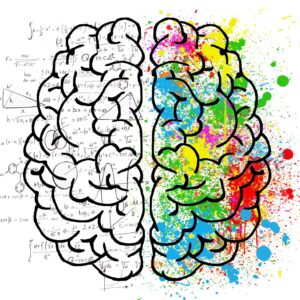As Artificial Intelligence (AI) continues to shape our world, it’s crucial to approach it with an informed perspective. By debunking these misconceptions, we hope to provide a clearer picture of what AI can and cannot do. As with any technology, understanding its capabilities and limitations is key to harnessing its potential effectively and responsibly. This blog post is a concise overview of common misconceptions about AI. Readers are encouraged to explore the linked resources for a deeper understanding of each topic.
As AI continues to evolve and integrate into our daily lives, it’s essential to separate fact from fiction. This article aims to debunk the top 10 misconceptions about AI, providing clarity on this transformative technology.
1. AI Can Think and Feel Like Humans
Misconception: Many believe that AI can think, feel, and possess consciousness like humans.
Reality: AI operates based on algorithms and data. It doesn’t have feelings, consciousness, or the ability to think independently. While AI can mimic human-like tasks, it doesn’t possess human-like consciousness or emotions.
Read more about AI consciousness here.
2. AI Can Surpass Human Intelligence Soon (The Imminent Singularity)
Misconception: The idea that AI will soon surpass human intelligence and potentially pose a threat to humanity.
Reality: While AI is advancing rapidly, achieving Artificial General Intelligence (AGI) — where machines can perform any intellectual task that a human can — is still a distant goal. Most AI today is narrow or specialized, designed for specific tasks.
Check out this perspective on AGI and its timeline.
3. AI Understands Content Like Humans Do
Misconception: When AI processes text or speech, it understands the content in the same way humans do.
Reality: AI models, even advanced ones like GPT-4, process information based on patterns in data. They don’t “understand” content in the same way humans do, lacking context or real-world understanding.
4. AI is Unbiased
Misconception: AI, being a machine, is inherently unbiased.
Reality: AI models can inherit biases present in their training data. If the data used to train an AI system contains biases, the AI’s decisions can also be biased.
Learn more about AI and bias here.
5. AI Can Create Art Like Humans
Misconception: AI-generated art is as genuine and heartfelt as human-created art.
Reality: While AI can generate art, music, or poetry, it does so based on patterns and data. It lacks the personal experiences, emotions, and intent that humans bring to their creations.
6. AI Will Soon Replace All Jobs
Misconception: AI will take over all human jobs, leading to massive unemployment.
Reality: While AI will automate certain tasks, many jobs require human touch, judgment, and interpersonal skills. AI is more likely to work alongside humans, augmenting our capabilities.
Explore the impact of AI on jobs here.
7. All AI is the Same
Misconception: All AI technologies and models are the same.
Reality: AI is a broad field encompassing various technologies, including machine learning, neural networks, natural language processing, and more. Each has its applications and limitations.
8. AI Can’t Make Mistakes
Misconception: AI, being a machine, is infallible.
Reality: AI models can and do make mistakes, especially when faced with data they haven’t been trained on. Their accuracy depends on the quality of the data and the design of their algorithms.
9. AI Understands Context Naturally
Misconception: AI inherently understands context in conversations or tasks.
Reality: While some AI models can handle context better than others, understanding and maintaining context, especially over extended interactions, remains challenging for AI.
10. AI’s Decisions are Always Explainable
Misconception: We can always understand and explain how AI arrived at a particular decision.
Reality: Some deep learning models, especially neural networks, are often termed as “black boxes” because their decision-making process can be complex and not easily interpretable.





